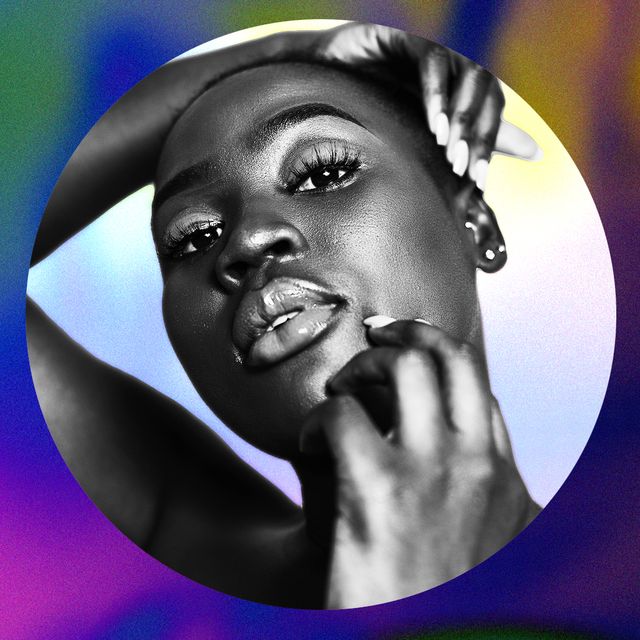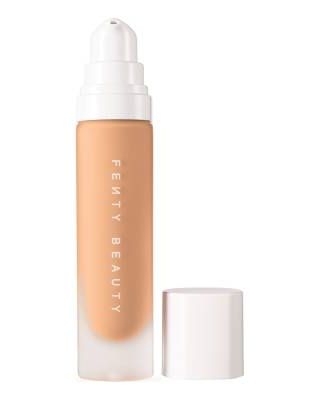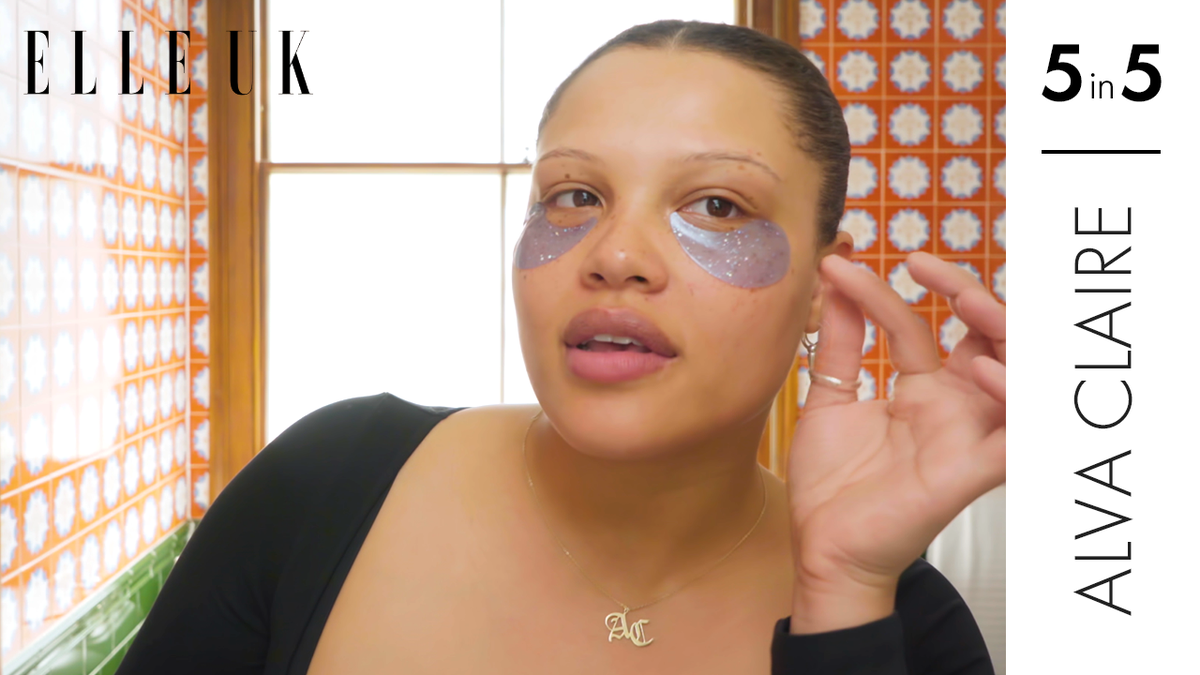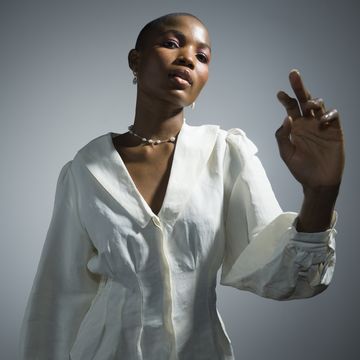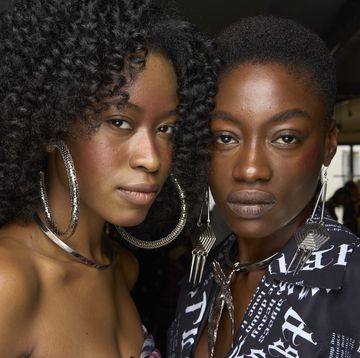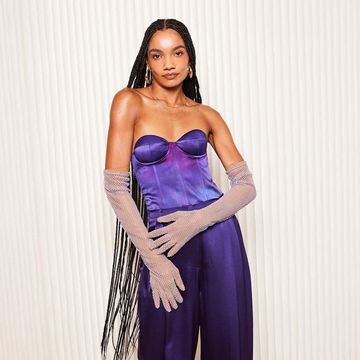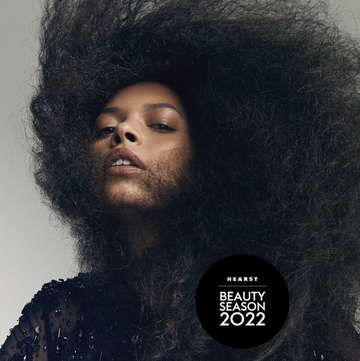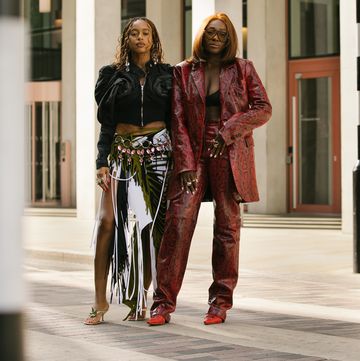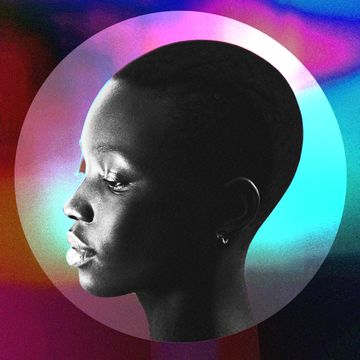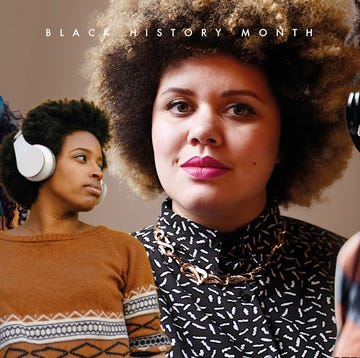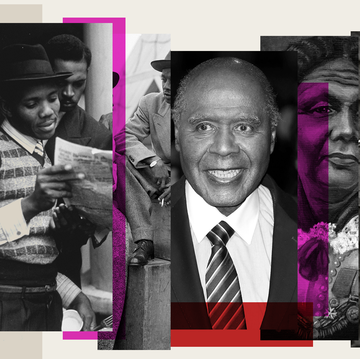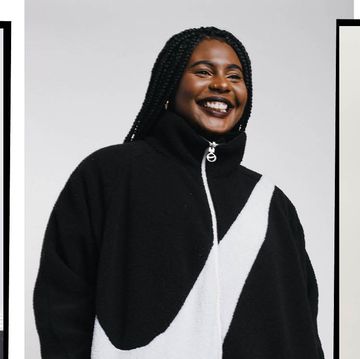For Black women, the fluorescent shelves of high street drug store make-up counters have long been the backdrop for deep frustration. From one-size-fits-all products with ashy finishes, to shades named after food items rather than skin tones, the quest for a good foundation has so often ended in bitter disappointment. As time goes on, shade ranges have become the clearest marker of progress - or lack thereof - in the industry.
Various excuses have been touted for for lack of colour inclusivity, all of them extremely flimsy. Whether it was ‘limited shelf space’ or a case of ‘undertone not included’ formulations, for years beauty brands seemed to be putting more effort into explaining away their lack of options for Black skin, rather than finding a way to create some. Then, spurred into action by ever more visible bloggers like Nyma Tang and Jackie Aina in the 2010s – brands like Urban Decay and NARS slowly began to diversify, with Rihanna's Fenty Beauty later pushing the whole industry to up their game.
Gradually, more and more beauty brands began to include Black women in their campaign imagery. It felt like progress of a sort, but sadly the real life experience of buying foundation didn't improve in tandem. The marketing, as it turns out, was virtue signalling, without much care put into serving the Black women they were now using to sell products. Finally, we were seeing Black women on beauty billboards, but the dream they were promoting was still just that; a dream.
Last year, the world was overcome with cries to end racial injustice, as the Black Lives Matter movement once again pushed for progress and the beauty industry felt the tidal wave too. The groundswell paved the way for initiatives like #pullupforchange, fronted by UOMA Founder Sharon Chuter, that called for industry-wide accountability. There was a new mandate for ultra-transparent beauty industry practises, transforming the industry at every level - from boardroom to billboard, to buying foundation in store.
This Black History Month, ELLE UK asked eight prominent Black women to give us some insight into their personal experiences of buying foundation, then and now, to see what progress - if any- has been made.
Iman Leila – Founder of Lima Comms
‘I think every Black British girl remembers the Dream Matte Mousse era – it was the first foundation I ever purchased and every single Black girl at school wore the same shade - Cocoa. We knew nothing about undertones or finish, but it was the "it" foundation at the time. After discovering YouTube, I moved on to MAC NW45 Studio Fix Fluid because, according to tutorials, every Black girl was the same shade!
'I’m savvier with my foundation purchases now and the inclusivity of ranges has made it a lot easier. I love that I can purchase foundations from brands like Beauty Bakerie, Pat McGrath and Uoma Beauty, who champion Black women. Online shopping may have opened up the foundation world, but I believe there’s nothing better than an in-store experience at beauty counters. My top tip: if in doubt, trial a foundation tester for a week, before committing to full size!'
Melissa Holdbrook-Akposoe, a.k.a. Melissa's Wardrobe – Celebrity Fashion Stylist and Interior Designer
‘I’ll never forget walking to the Marble Arch Superdrug, after finishing my Saturday shift at Waitrose, to buy foundation. It was pay day and as a 19-year-old impulse-buyer armed with £400 of disposable income, I was ready for everything Superdrug had to offer. That day I left with two bottles of Revlon Colourstay – two because I was so chuffed to see three shades that were close enough to my skin tone that I would be able to mix, match and experiment with.
'Now, my process is less juvenile, to say the least. Before purchasing any base layer, I’ll look at the finish, the undertones and how well it works with primers, concealers and any other products I intend to use on top of it. It’s much harder to get me to blind purchase now!'
Henrie Kwushue – Radio Host and Presenter
'I started wearing make-up a lot later in life compared to most people, maybe around my first or second year of University, so it was very daunting getting my foundation matched for the first time. It felt like make-up had advanced so much by that point and I was playing catch-up. I remember walking into a local Boots and just staring at the foundation wall for around 10 minutes – I had no idea about my undertone, what skin type I had and definitely had no idea what words like comedogenic meant!
'Despite being a novice, one thing I did know back then was if you have a darker skin tone then in-store colour matching was the Wild West. Unsurprisingly, during that first experience, the women who came to assist me proceeded to match me at least three shades lighter than my actual skin, with a pink undertone too. Thankfully now as part of my job I get to work with talented MUAs and experts that help to guide my foundation purchases.'
Dija Ayodele - Skin Expert and Author of 'Black Skin: The Definitive Skincare Guide'
‘When I was at university - 20 or so years ago - the only foundation that was accessible was Maybelline’s Dream Matte Mousse in Cocoa, and as a student I made it work. Even after I moved on to the likes of MAC, Giorgio Armani and YSL, I would still stock up in New York because brands never seemed to roll out the full ranges in the UK.
'It was clear that more money gave you more choice. Women who couldn’t afford £60+ for a foundation were an afterthought. Now, there’s so much more choice at different price points so I feel like we can focus on other aspects of inclusivity within make-up. Yes, some brands still don’t have inclusivity at their core, but I’d rather use my spending power with brands that are doing the work to centre inclusive experiences for Black women. Nowadays, I'm interested in the back office of brands rather than what is presented on counter because if there is a culturally diverse workforce at play, then the product offerings will deliver for all.'
Shenae Rae - Founder of Swear By Skin
‘The first high street brand I bought from when starting to wear make-up was - like most Black women - Maybelline. Looking back, it wasn’t a choice but more of a given as all the other brands left me looking ashy with a subtle white-powdered "Dracula face". I laugh looking through old photos at the difference in colour between my face and neck because it just highlights the fact that even my "match" from Maybelline wasn’t dark enough.
'Now we do have the colour options -thanks Fenty Beauty - but not always the right undertones. Skin conditions like hyper-pigmentation - a struggle that so many of us dark-skinned girls face – make finding the right undertone so key. Buying foundation is a much lengthier process for me now, I’ll test the shade on different parts of my face and chest making sure it matches my undertone, mindful not to rely on in store lighting because natural light is the ultimate truth-teller!’
Aisha Jawando – West End Performer in 'TINA -The Musical'
'Growing up as a child performer, make-up was a must for shows, however it wasn’t until I was about nineteen that a woman called Cookie Jordan gave me my first foundation. I'd just landed my first role as an adult; at that time most shows on the West End were sponsored by a beauty brand and although I used the brand for years, I found that it oxidised a lot leaving my skin looking grey-ish. No matter what shade I used it never seemed to have the right undertone.
'During the winter I find that I have more yellow undertones and once the sun kisses my skin it leans towards red, but it took a while for me to figure that out and it wasn’t until more beauty brands - mostly ones fronted by Black women - began expanding their shade range that I found more choice. I still struggle to find the right shades and undertones but the majority of the time I'm happy with the way the make-up I wear complements my skin.'
Dr Ewoma Ukeleghe – Medical & Cosmetic Doctor and Founder Of SKNDOCTOR
'My first experience of buying a foundation on the high street was probably the same painful experience all Black girls had at the time. Whenever I'd pop to Boots with the hope that I'd find a shade to match my skin, I would instead be presented with the ever present fifty shades of beige and the limited selection of 'Deep' and 'Deep Dark' a.k.a. 'this is going to be ashy as hell'. The juxtaposition was a reminder that, in terms of beauty standards, white was the given.
'Although we had MAC, the price difference between that and a £7.99 foundation was what I call the 'Black Beauty Tax'. Looking cute if you were Black cost three times more than it did for everyone else. Now, there's been a complete paradigm shift in the industry, with different shade ranges, textures and finishes. Thanks to Rihanna, mainstream brands finally woke up and realised that Black and brown people need foundation too. I love how far the industry has come and that the Black women that come after me won’t have to go through the struggle I once did.'
Fleeked By Fee – Nail Artist
‘The shift in the beauty industry around diversity has been an amazing thing to experience. I remember about seven years ago, picking up make-up at my local shopping centre was such a difficult process. Finding a foundation for my skin tone was almost impossible - it was always just the one shade for everyone Black, no matter the tone. The logic was so flawed as there isn’t just one tone or shade of Black people and I’d often find myself mixing shades to try create a "never quite right, but close enough" shade.
'Now, I feel like most brands have so many different swatches for all shades of Black women. I love using Estée Lauder Double Wear in Mocha, the range actually has so many different shades I initially struggled to pick a match! There’s still some progress to be made but we’re getting there.'
